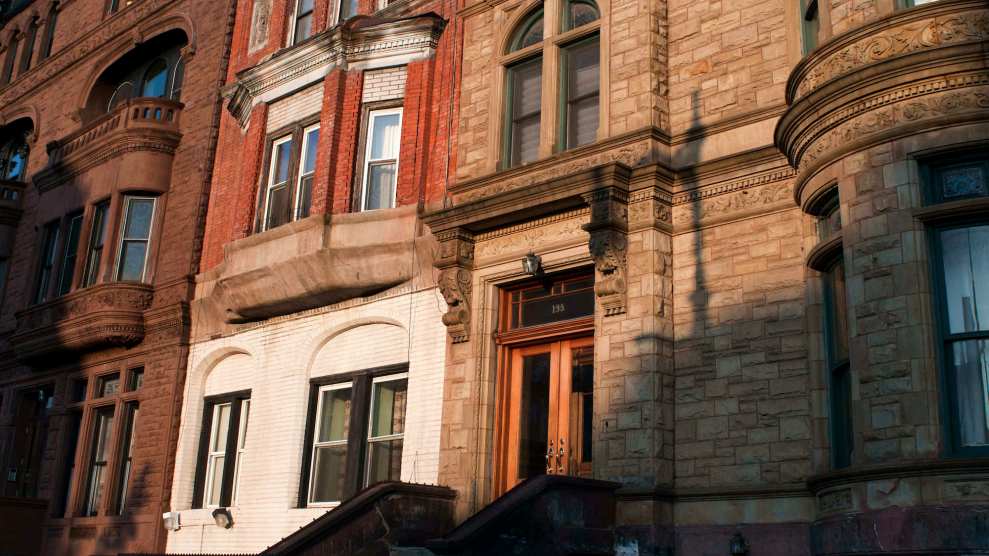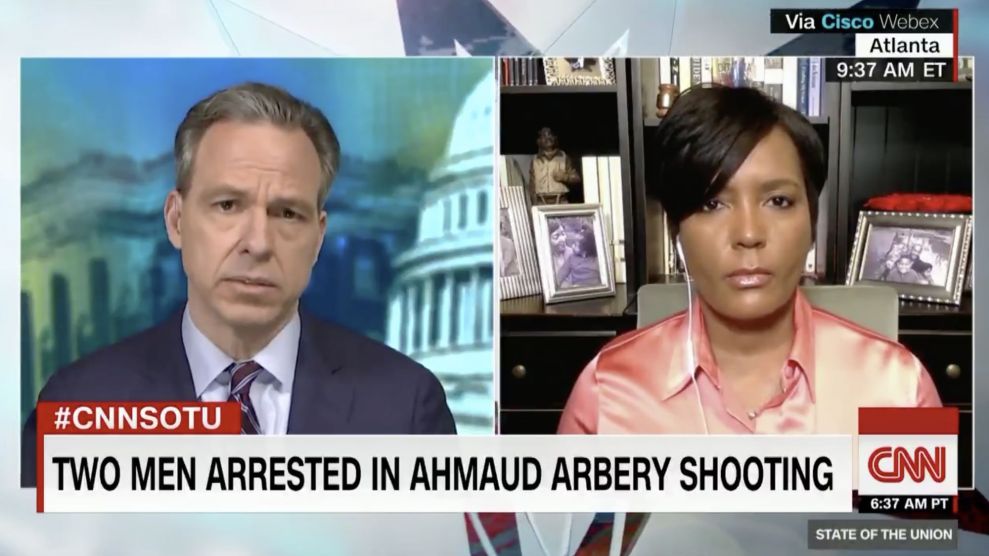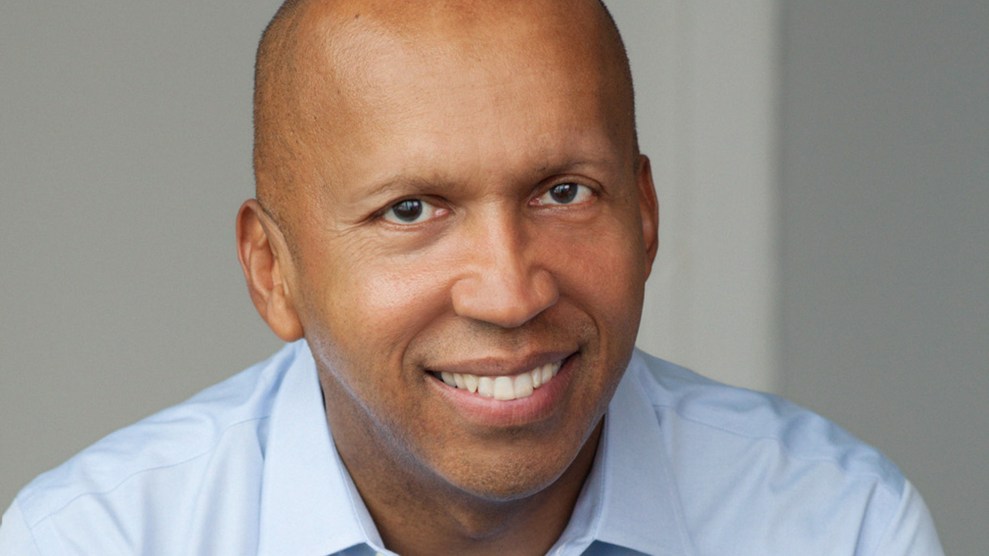Joyce Faye Nelson-Crockett was 13 years old in 1955, dancing to a jukebox in the Hughes Cafe on a Saturday night in East Texas with her sister and her 16-year-old cousin, John Earl Reese. The boy had come home to the nearby town of Mayflower earlier that day after a summer away picking cotton, and he held Nelson-Crockett’s hand as he spun her around the room. All of a sudden, a sharp crack interrupted the music. Nelson-Crockett thought it was fireworks at first, until she heard a thud on the floor and noticed Reese lying there. “I looked and saw his brain coming out of his head,” she later told a reporter. She felt warm liquid running down her arm and saw that she’d been struck, too, in her wrist. Her 15-year-old sister also took a bullet in the shoulder. Nelson-Crockett later learned that two white men shot through the cafe windows from their car because they were angry that local politicians had agreed to spend money on a school for Black kids.
Reese died from his wounds. But the gunmen never spent a day in prison. “I felt terrible then. Still do,” Nelson-Crockett told the Fort Worth Star-Telegram in 1989. “I guess I will until I’m dead.” She’d been close with her cousin, who had lived down the street from her and walked with her to catch the bus, often making her laugh when she was having a bad day. The county government didn’t seem to care about the way his life had been cut short: Its records listed Reese’s death as an accident, despite plenty of evidence, including the killers’ confessions, that he’d died in a racist murder.
In the decades following the shooting, Nelson-Crockett didn’t talk much about Reese to relatives. The family lost all its photos of him during fires that destroyed her house and her grandmother’s house. By the time she reached middle age, she worried that if she spoke about his murder, her granddaughter, whom she was raising, might look at their neighbors differently or feel unsafe at school; some of the shooters’ relatives likely still lived in the area. So Nelson-Crockett kept the memories buried and tried to stay busy farming her land. “I don’t ever understand what could be done,” she told the Longview News-Journal in 2009, when she was in her late 60s. “Nothing you do will bring him back.”
That year, Nelson-Crockett got a phone call that would change the course of her family’s story. On the other end of the line, a law student in Massachusetts named Kaylie Simon claimed to have new information about the shooting and asked whether Nelson-Crockett would be open to a meeting. Nelson-Crockett was surprised by the question, and a little anxious. For decades, she’d carefully averted her eyes whenever she drove near the pine tree–filled lot where the Hughes Cafe once stood. But she also felt relieved to hear from someone who cared about a part of her life that few white people had taken seriously.
Simon was investigating Reese’s death as part of Northeastern University School of Law’s Civil Rights and Restorative Justice Project. Its researchers examine racialized killings between 1930 and 1970, during the Jim Crow era and its immediate aftermath. They dig up new information about unsolved murders, push officials to set the record straight, and ask surviving family members what they need to heal.
The project, launched in 2007, is the brainchild of Northeastern professor Margaret Burnham, an attorney, former judge, and lifelong civil rights activist. “I became interested in learning how many cases were incomplete, in the sense that no judicial proceedings ever addressed the harms that had befallen these people and the trauma experienced by their families,” she told me. It bothered her that so many of these stories had not been recorded.
For more than a year, the country has been gripped by a racial reckoning caused by the high-profile killings of George Floyd, Breonna Taylor, Ahmaud Arbery, and other Black men and women. The reckoning has fueled a public desire to reexamine murders that happened decades ago and still haunt surviving families, some of whom have struggled to recover because no one in power ever acknowledged their pain. Today, the official records of these older killings are often inaccurate. If they aren’t corrected soon, the true stories may never come out; many witnesses to the crimes of the Jim Crow era are aging and dying.
Before these memories fade, Burnham’s law and journalism students are racing to fill in details about racially motivated murders that were never properly investigated. They sometimes spend years looking into a single case, with help from Burnham, two other professors, a couple of attorneys, an archivist, and a historian. It’s like “legal archaeology,” Burnham says. The students read old newspapers, travel to Southern towns to obtain court transcripts, and speak with surviving families. “It’s really not enough to say, ‘Those were horrible days,’ and let them pass,” Burnham told the Northeastern Law magazine in 2010. “The details matter. These stories are important, and to the extent these people are still around, their stories deserve to be told.”
Prosecuting these murders often isn’t possible because so much time has passed and many perpetrators have long since died. But there are other ways to make amends: In some instances, Burnham and the students have compelled officials to apologize for the lack of accountability and correct falsehoods in records. Her team focuses on restorative justice, a model of responding to violence that asks survivors how they were harmed and what they need to recover. Burnham’s project is “part of a national reckoning that is underway,” says Geoff Ward, a professor of African American history at Washington University in St. Louis. In June, President Biden nominated Burnham to serve on the newly formed Civil Rights Cold Case Review Board, a federal panel tasked with improving public access to records about unsolved murders of Black people during the civil rights era.
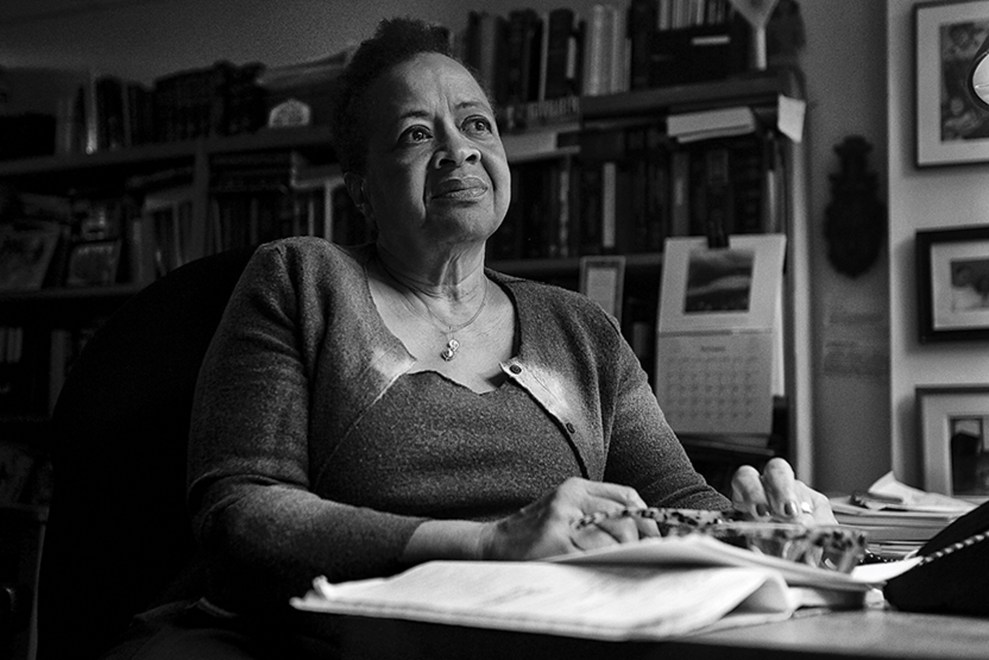
Margaret Burnham, a law professor at Northeastern University and founder of the Civil Rights and Restorative Justice Project
Suzanne Kreiter/The Boston Globe/Getty
Uncovering this buried history, Burnham hopes, could also help ease the kind of intergenerational trauma that silence can mask, trauma that can seep through entire communities. Like Nelson-Crockett, many survivors have lived for years with secrets about what their families endured. When aging witnesses share their stories with relatives, it can unite them; “it becomes part of the book of sorrow of the family,” Burnham says. Correcting records can help people feel heard. And situating their experience in the broader framework of American history, including by connecting survivors with other survivors, can allow them to feel less alone and empower them to become agents of social justice.
“It’s absolutely vital work,” says Kidada Williams, an associate professor at Wayne State University in Detroit who studies racist violence. For a long time, Williams says, historians who investigated lynchings “were looking at everything except the people directly impacted.” While other scholars explored what these killings reflected about the press, the legal system, white people, and Black activists, Burnham’s project is one of the largest of its kind to focus on the families.
Sharing these stories will be crucial, adds Nan Elizabeth Woodruff, a professor emeritus of African American history at Pennsylvania State University, if the nation is ever going to truly reckon with its history of racism. To address the harms Black Americans have suffered, we must first document and understand them. As Burnham puts it, “Healing requires truth.”
Nobody knows how many Black people were killed in racist attacks during the Jim Crow era, which began in the late 1800s and lasted until the mid-1960s. While some civil rights martyrs are widely remembered—like 14-year-old Emmett Till from Chicago, who was abducted while visiting relatives in Mississippi in 1955, or the four girls who died when white supremacists bombed the 16th Street Baptist Church in Alabama in 1963—these deaths are only the tip of an iceberg whose full extent may never be accounted for. Many killings were never recorded, and when they were, government officials often condoned the violence or tried to hide what happened.
“There’s this vast, invisible universe of unknown victims who were murdered far from a reporter’s pen, or who the police never found out about or decided not to record for some reason,” says Jay Driskell, a historian who is helping Burnham’s students investigate these killings. Even with limited records, it’s clear the death toll was enormous. The Alabama-based Equal Justice Initiative, a legal nonprofit, has documented the lynchings of at least 4,000 Black people in 12 states in the South between 1877 and 1950.
As she works to shed light on these cases, Burnham is often reluctant to tell her own story, even when discussing her life’s work. “I really don’t want this to be about me,” she told me. But her past merits some mention, given her own ties to the struggles of the Jim Crow era. She was born in Birmingham in 1944. Both her parents were passionate activists for racial equality. Her father, Louis Everett Burnham, helped organize voter registration campaigns in the 1940s and was once arrested for dining with a white couple in a Black-only restaurant. The city’s police commissioner, Eugene “Bull” Connor, a Klan supporter who later became notorious for turning dogs on Black children, threatened to lock him up for his work leading the Southern Negro Youth Congress.
When Burnham was a young girl, her mother was friends with another SNYC member, a schoolteacher named Sallye Bell Davis—whose daughter, Angela Davis, became Burnham’s lifelong friend. Burnham went to the University of Pennsylvania for law school, while Davis became a political activist, scholar, and author widely known for her work on prison abolition. When the police arrested Davis in 1970 in connection with an armed takeover of a California courthouse, Burnham was the first lawyer to represent her in New York. “She was the only attorney who remained with me from the moment of my arrest until the moment of my acquittal,” Davis recalled later.
Burnham started her legal career with the NAACP Legal Defense and Educational Fund, and in 1977 she became the first Black woman to serve as a judge in Massachusetts when she was appointed by Gov. Michael Dukakis. In 1993, South African President Nelson Mandela asked her to join a precursor to the Truth and Reconciliation Commission that investigated alleged human rights violations in his country under apartheid.
By 2007, Burnham was teaching at Northeastern University when Rep. John Lewis introduced the Emmett Till Act, which gave the Justice Department funding to examine civil rights–era homicides and help local attorneys prosecute perpetrators who were still alive. “I really truly believe, in the depth of my soul, that if we’re going to have peace, if we’re going to have healing, if we’re going to move closer and closer to that sense of community—then everything must come out,” Lewis told PBS’s Frontline. “We must tell the whole story, the complete story. People need to know.”
After Lewis introduced the act, Burnham quickly organized a conference to connect family members with prosecutors who might examine their cases. There, she met Thomas Moore, a man from Mississippi whose 19-year-old brother had been lynched by the KKK in 1964. Authorities discovered his body in the Mississippi River while searching for three Freedom Summer activists abducted and killed by the KKK earlier that year in the notorious Mississippi Burning murders. (Burnham, who was just 19 then, had known two of the activists personally.) After the conference, she helped Moore sue local law enforcement for complicity in his brother’s killing. Working on that case got her thinking more about other families who lost relatives to racist violence and never received any measure of acknowledgment in court.
The Emmett Till Act, by funding prosecutors to examine decades-old murders, was a way to help those families. But to Burnham, the new bill had some limitations: The act directed the Justice Department to focus mostly on killings from the 1950s and ’60s, leaving earlier Jim Crow cases untouched. And the investigations that resulted from the Emmett Till Act usually didn’t lead to new convictions; by 2019, only five people had been prosecuted because of the law. Families whose cases could not be brought to trial were left with little recourse.
So Burnham launched the Civil Rights and Restorative Justice Project to investigate killings that the Justice Department would not. Her team found that at least 1,100 Americans died in racially motivated violence from 1930 to 1955 alone. She and MIT scholar Melissa Nobles created an archive to put records of these Jim Crow killings in one place, to help the public see the pervasiveness of the violence. (It will go online in 2022.)
Burnham’s team has since investigated about 650 of these cold-case killings and plans to use grants, donations, and other funding to examine hundreds more. Where the Justice Department focuses on prosecutions, Burnham’s team tries to do “whatever the families feel is important today to grapple with this traumatic history.” That can range from asking governments to correct false records, to putting up monuments for the deceased or holding ceremonies in their memory, to teaching kids in schools about what happened.
Unearthing the past could help scholars acknowledge the long contrails that extend from racist violence. “Historians like to use the past tense,” says Williams, the Wayne State scholar. “Survivors often use the active present tense, as in: This is still happening to me. I am still living with the fallout.”
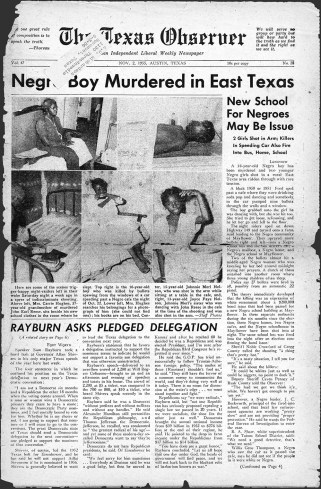
The front page of the Texas Observer on November 2, 1955, which leads with the story of John Earl Reese
The Texas Observer
On the Saturday night in 1955 when John Earl Reese was shot, as Nelson-Crockett sought treatment for her gunshot wound at a hospital, the same men who killed her cousin hours earlier rampaged through a mostly Black neighborhood in Mayflower. They fired about 27 shells, including at a school for Black children, a school bus, and the house of a woman who was praying at her bedside.
Afterward, law enforcement arrested two Black men and wrongly blamed them for Reese’s death. With that, the county government essentially gave up its investigation of Reese’s killing.
But residents in Mayflower suspected a cover-up. Sheriff Herman Orr had been in the neighborhood on the night of the rampage, not far from where the white men stood as they fired bullets into the school. And he knew one of the shooters personally, leading some residents to speculate that he could have stopped the violence but instead turned a blind eye.
Ronnie Dugger, the founding editor of the Texas Observer, wasn’t ready to let the case drop. He found a shell from one of the bullets and published a photo of Reese’s body, drawing attention from the national press. A Texas Rangers investigation led to the arrest of the actual gunmen, Perry Dean Ross and Joe Reagan Simpson, who both confessed. Ross told investigators he fired his rifle into the cafe while speeding down the highway with Simpson. “I held the steering wheel with my left hand and laid the gun across the left door,” he said. “I was going about 85 miles per hour at the time.” It was a clear admission of guilt. But Simpson was never tried.
Half a century later, when the Justice Department looked into Reese’s death again after the Emmett Till Act passed in 2007, it closed the case because the perpetrators were no longer alive.
Burnham learned about Reese’s murder after launching her project that year. Back in 1989, during the dedication of a civil rights memorial in Montgomery, Alabama, his name was listed between those of Emmett Till and Rosa Parks. Despite this recognition, no one in Texas had ever determined how government officials allowed two white men to walk free after they had confessed to killing the teen. “It’s important to acknowledge where a justice system failed its community,” she told the Longview News-Journal in 2009. “No one ever came to Ms. Nelson and asked her what happened. ‘Sorry’ is an important word for somebody in that position to hear. She’s not hearing that from her own community.”
Burnham also hoped her students could illuminate the circumstances leading to Reese’s murder, including the fight to desegregate the county’s schools. Early the next year, she sent Kaylie Simon, then a 25-year-old law student from California, down to Texas. Simon had applied to Northeastern specifically to work with Burnham, whom she’d learned about while studying with Professor Angela Davis as an undergrad at UC Santa Cruz.
Simon had never been to Texas when she and Janeen Blake, a recent law school graduate from New Jersey, flew to Dallas. They passed oil refineries and Confederate flags on their way to the eastern edge of Texas, the last state in the South to stop enslaving Black people. The cafe where Reese was shot had been located in rural Gregg County, and Nelson-Crockett, who’d recently retired as a maid and caretaker, was raising her 17-year-old granddaughter, Kimyonia Bowman, in the nearby town of Tatum. She hadn’t told Bowman, who knew little about Reese’s death, about the students or their project.
When Simon and Blake arrived, Nelson-Crockett greeted them with a warm smile and ushered them inside, showing off her deep freezer that contained the large perch and catfish she’d caught in a nearby lake. Then she invited them to sit around the kitchen table to talk about her cousin’s death.
Looking down often at the scar on her wrist, Nelson-Crockett recounted details about the shooting that the students had never heard. The day after Reese was shot, she recalled, her grandmother, who had helped raise her and Reese, was thrown in jail. Law enforcement accused her of shooting the kids herself to collect insurance money—something everyone in town knew was a lie. “What insurance money? We didn’t have enough money to bury the boy,” Nelson-Crockett later told the Longview News-Journal.
Then Burnham’s students began to reveal the details they had dug up through public records, interviews, and old newspapers with help from an East Texas archivist and Texas Observer editor Ronnie Dugger. The students told Nelson-Crockett that Joe Simpson, one of the shooters, had an uncle named Jim Kuykendall, who was an influential man in Tatum at the time of the killing. Kuykendall. The name must have sent chills up Nelson-Crockett’s spine.
In the months leading up to Reese’s death, Kuykendall and some other white residents were especially active in debates about school segregation. In 1954, a year before the shooting, the Supreme Court had issued its Brown v. Board of Education decision, declaring that “separate but equal” schools for Black and white kids were unconstitutional. Because many white people in the Tatum-Mayflower school district didn’t want to desegregate, they voted in 1955 to spend money improving the all-Black Mayflower High School, hoping it might convince the kids to stay there rather than enrolling in the all-white Tatum High. “The majority of the white people would rather build us a school instead of letting us go to school with them,” a Black resident later told the Star-Telegram. But some white voters, the resident added, “didn’t want anything for us” and fiercely opposed spending any money on Black students. Kuykendall led the faction fighting against the funds.
The day after a bond for Mayflower High School was approved, a large skull-and-crossbones image appeared on the window of the county tax assessor, alongside racist slurs including “Negro lover.” A few days later, Kuykendall’s nephew Joe Simpson was caught with a slip of paper in his pocket that showed a nearly identical drawing. Simpson and Ross later admitted they shot up the cafe because they were angry about the school upgrade for “uppity Blacks.”
Nelson-Crockett already knew that Simpson was never tried for her cousin’s death. She knew Ross confessed to investigators and was convicted by an all-white jury of murder but was then let off the hook during the sentencing hearing—after his defense attorney had asked them to “call it a bad day and let the boy go on in life.” (The prosecutor recommended a five-year prison sentence, but the jurors handed Ross a suspended sentence of five years’ probation, sparing him prison time.)
She knew that the grand jury that had indicted Ross declared that racism had nothing to do with the violence, and that Reese’s death certificate still claimed his killing was an accident.
Nelson-Crockett remembered all that. But she had never heard that Kuykendall was connected to the killers. It made her go quiet in her chair, as the weight of it all sank in: She’d spent much of her adult life working as a maid and caretaker in the home of Kuykendall’s son.
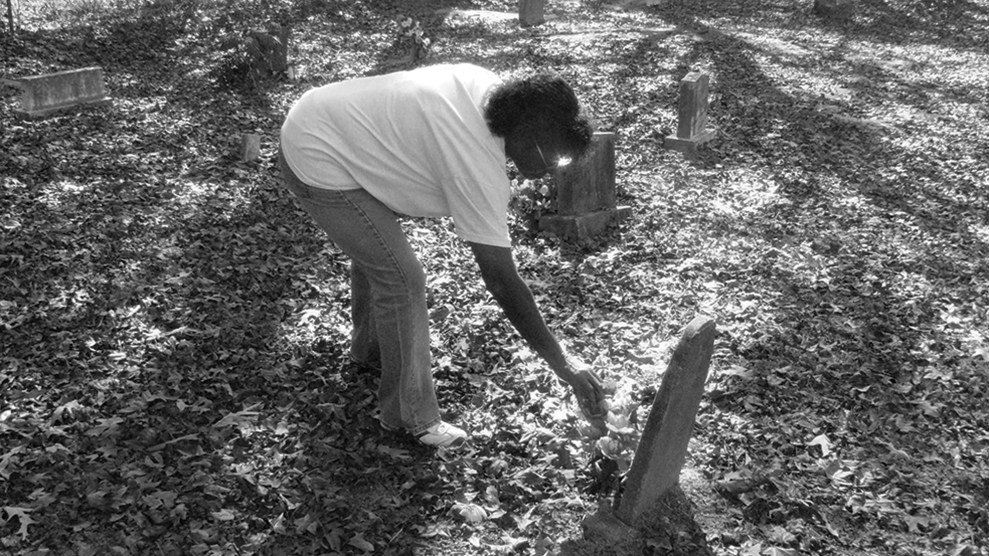
Joyce Faye Nelson-Crockett at the grave of her cousin John Earl Reese
Kaylie Simon
As Nelson-Crockett’s granddaughter Kimyonia Bowman eventually learned the details of the murder, she grew frustrated that her schoolteachers at Tatum High had never mentioned the drive-by shootings even once. How can this be swept under the rug when so many families were affected? she thought.
When Burnham’s students visited Nelson-Crockett’s home, they asked whether there was anything they could do to help her family heal from Reese’s killing. Even though prosecuting the killers was no longer possible because both men were dead, there were other ways to recognize the trauma that they had endured. Nelson-Crockett and other community members told Burnham’s students that their main goals were to set the record straight and for authorities to condemn the violence.
So in July 2010, Simon helped arrange for Nelson-Crockett to meet with local officials about what happened to her in the cafe. On the drive over, Nelson-Crockett seemed nervous and, worried she might not have the strength to recount her experiences, asked Simon to do most of the talking.
But the meeting went better than expected. After Nelson-Crockett told her story, one of the officials, the mayor of the nearby town of Henderson, promised to issue a public statement deeming the shootings an injustice. Afterward, Nelson-Crockett seemed lighter to Simon, skipping as they walked back to the car. “I can’t believe they never knew what happened to us,” she told Simon. “I am glad they know now.”
In October 2010, on the 55th anniversary of the shooting, community leaders gathered at the library in Tatum, where the librarian hung a plaque honoring Nelson-Crockett, her sister, and Reese as “victims of anti–civil rights violence.” Simon presented the librarian with a binder of her research so people could learn more about Reese. (She also developed a curriculum about Reese’s story for teachers to use at Tatum High School.)
From the library, the crowd drove to Mayflower, stopping near a church that had been sprayed with bullets the night of Reese’s killing. There, on the same road that Reese walked to get to school, a new street sign bearing his name gleamed in the sun. “That to me was really nice,” says Bowman, Nelson-Crockett’s granddaughter. “It was a tear-jerker because you knew finally his name was being said.”
Earlier that day, the family visited a graveyard where Reese’s old tombstone had long stood, its hand-carved epitaph stating the wrong date of death. Beside it, along with bouquets of roses, now stood a new tombstone declaring Reese’s real date of death and referring to him as a “civil rights martyr.”
Reese’s 54-year-old half-brother, who was born after the shooting and also named John Reese in memory of his deceased sibling, was present at the ceremony. “It was just mind-blowing that she would go and dig up the truth and come back and report it without sugar-coating it,” he says of Simon. “Some people now, they would be like, ‘That was a long time ago. We can’t be held accountable for something they did back then.’”
But he wished county officials did more to acknowledge their own role in allowing the killers to walk free. “It was a cover-up,” he says. “Gregg County is just as guilty as the guys that did it, and I don’t think anyone [from the county] said anything like they were sorry it happened.”
A couple of months after the ceremony, at Simon’s request, the county issued a new death certificate for Reese, declaring that he was killed by homicide and not in an accident. When Nelson-Crockett found out about the change, “she could not hold her tears back,” her granddaughter Bowman recalls. “She would always say, ‘Oh, I wish his family could have been here to see this.’”
“I don’t think my grandmother ever thought in her mind that she would live to see what happened,” Bowman adds. “I don’t think she ever thought she would see that change.”
Not everyone is as eager as Nelson-Crockett to dig up the past. Some survivors, still grappling with their trauma, have resisted working with Burnham’s students, or find the process so painful that they stop engaging with them. Some families doubt they’ll find any benefit in unearthing their losses so long after the crime.
That was the case when Recie Gilbert Moss, now 94, first heard that Burnham was looking into her childhood trauma. She had been 19 back in 1947 when her father, Henry “Peg” Gilbert, was killed by Harris County, Georgia, law enforcement. He was a deacon and community leader, with a plot of 111 acres to his name that made him a subject of envy among his white neighbors. One day, the police chief arrived at the property and accused him of helping another Black man escape law enforcement, something Gilbert and his family denied. Three days later, Gilbert was found dead in a jail cell, his skull shattered, his legs broken, and his body riddled with bullet holes. The police chief claimed to have beaten him in self-defense. Nobody ever faced charges.
After Gilbert’s death, his 111 acres went up for auction, selling for dirt cheap to a white farmer. The family left town, and the children were raised by relatives. Almost 70 years later, Gilbert’s two surviving daughters, Recie Gilbert Moss and Mattie Gilbert, avoided talking about his killing. White newspapers at the time of their father’s murder had described him as a criminal who attacked the police in jail, an allegation the sisters insisted wasn’t true. Yet decades later, shame and anger still clung to the memories. Some of their own children didn’t even know what had happened to him.
When Burnham’s student Tara Dunn started investigating the family’s story in 2015, Gilbert Moss, who was living in Detroit, wanted nothing to do with her work, at least initially. Thinking about the past hurt too much, and she didn’t see an upside. Dunn sent messages to the Gilbert sisters through a relative who acted as a mediator, explaining how she hoped to correct the record and reveal evidence they might not have: The police chief, Dunn learned, had been nearly two decades older than Gilbert at the time of his murder, and significantly smaller. There’s no way one 65-year-old man could have inflicted those injuries on a man 20 years younger, twice his size, Dunn emphasized. The chief likely had help.
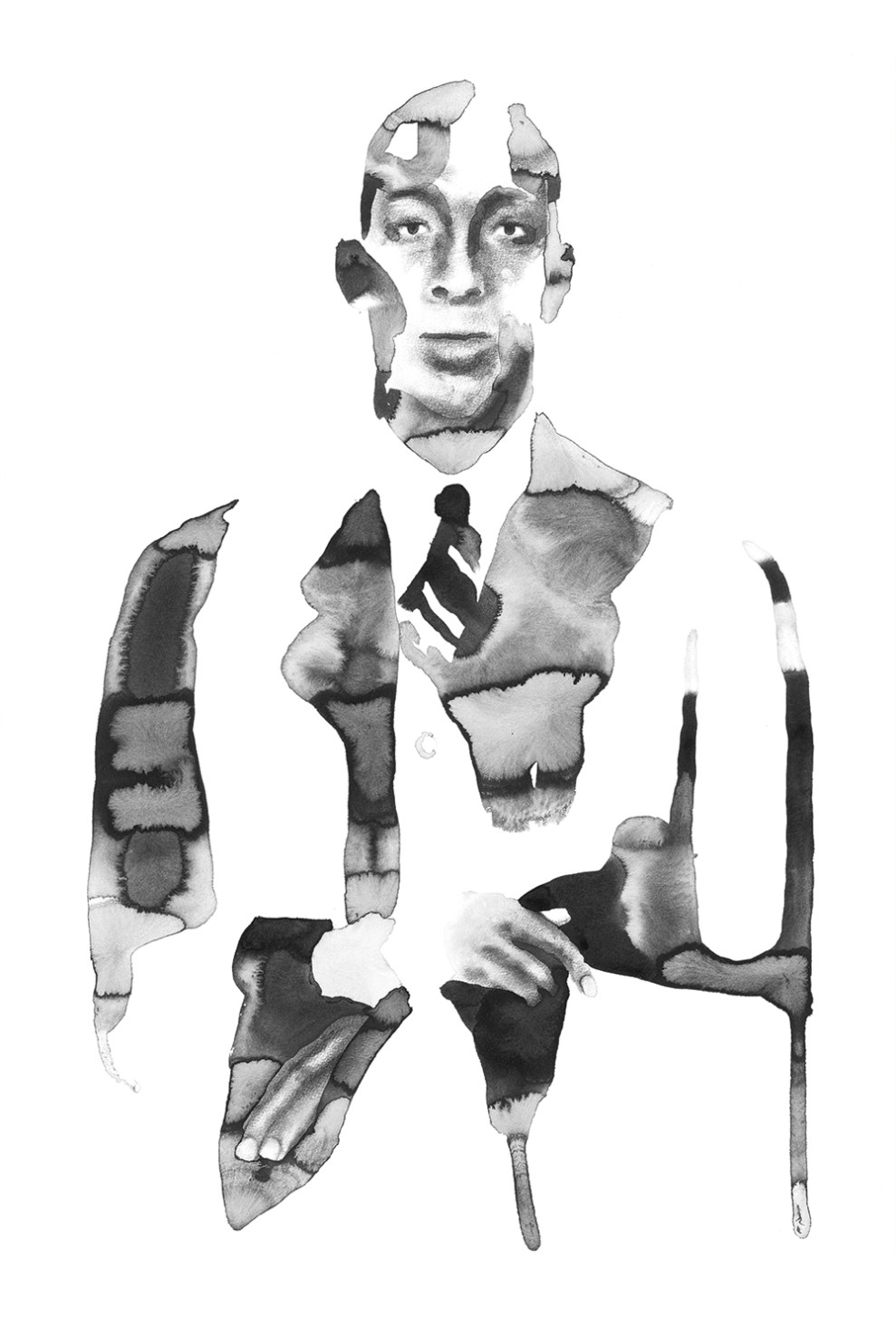
After Dunn and another student joined the sisters for a meal at a Baptist church in West Point, Georgia, the sisters began to warm to the researchers. They invited them over for an interview at Mattie Gilbert’s home.
But when Dunn began asking about information she’d found in old media reports—articles by white journalists suggesting that Gilbert had been an aggressor in jail—it was too much for Recie Gilbert Moss. She stood up from her chair and shouted her disapproval. “These are all lies! They’re lies!” Dunn recalls her saying. The students gave her some space. “Nobody said, ‘Calm down’ or ‘It’s gonna be okay.’ We just listened,” Dunn recalls.
Afterward, Gilbert Moss flew home to Detroit, and she didn’t return when her sister agreed to sit for a second interview with the law students. (Through one of her children, Gilbert Moss also declined to be interviewed for this article.)
Later, when Burnham helped organize an event in Georgia to honor Henry Gilbert in 2018, Gilbert Moss decided not to attend, telling her daughter Sheila Moss-Brown that it would be too gut-wrenching. (Her sister didn’t attend, either—she died in 2016.)
But other family members did participate, talking afterward with a film crew that was making a documentary about Gilbert. And slowly, Gilbert Moss came back to her father’s story. The first time she tried to watch the film, she became so sad that she needed to turn away from the screen after a few minutes. But in March this year, she decided to sit through the entire documentary when her relatives watched it together during a Zoom call, and she remarked afterward that she appreciated how the students included a quote from her at the end. “It was easier for her to watch it with family members there,” says her daughter Moss-Brown.
In 2016, Karen Branan, a writer whose grandfather was the sheriff at the time of Gilbert’s murder, learned about Burnham’s project. A year later, she wrote to Gilbert Moss, apologizing for the way her father’s life was cut short. Today, Gilbert Moss continues to exchange letters with her. “She’s honored that the truth is coming out,” Moss-Brown says of her mom’s appreciation for Burnham’s project. “Is she completely healed? No. Has it helped tremendously? Absolutely.”
Since the uprisings that spread after a Minneapolis police officer murdered George Floyd, Black Americans have had a larger platform to share their experiences with racist violence. For relatives of people murdered in the Jim Crow era, new killings can compound traumas that began decades ago. “These wounds have never healed,” says Burnham. “There’s not a Black person alive today who doesn’t know something about Emmett Till. There’s not a Black person alive today who won’t forever hold in their minds the lynching of George Floyd. These things are traumatic and personal, and they leave one feeling a kind of vulnerability associated with race that is uniquely American.”
The families whose loved ones were murdered during the Jim Crow era “were not the beneficiaries of a George Floyd moment,” Burnham adds. “They did not have access to court proceedings. They did not have lawyers who would work with them to identify a course of justice, and they didn’t have community support.” Through her project and its focus on restorative justice, she hopes to create that community support for families who never got it, by bringing together relatives and neighbors to honor each other’s memories and organize for change.
And she hopes to create some measure of justice. In 2018, Harris County Sheriff Mike Jolley made a statement during a church gathering about Gilbert’s murder, declaring that the “criminal justice system had failed.” Darren Mills, Gilbert’s grandson, told a filmmaker afterward that the sheriff’s statement didn’t solve much—because the family was still missing its 111 acres. “As long as you keep our inheritance, you can stand up and say you sorry,” he said. “What you gonna do after sorry? As long as we don’t have what my grandfather and grandmother worked so hard for, our family tree is still broken.”
Burnham’s project cannot restore that inheritance. But Woodruff, the Penn State professor, believes it might lay the groundwork for future generations to regain some of their stolen wealth, by documenting the losses their families experienced. “There has to be a record of harm done if we ever have a reckoning, whether it’s some form of reparations or whatever it may be,” she says. Burnham and her team, Woodruff hopes, “will provide a lot of evidence.”
“By piercing the silence that tends to surround these histories, the erasure, by making it visible, the project places pressure on the society itself to face its history and come to terms with the ways we continue to be haunted by these histories and their legacy,” says Ward, the Washington University professor. “And out of that pressure comes a larger number of people saying, Yes, we have to acknowledge this history, we have to think about and pursue reparations. That’s the only way we can get to reconciliation.”
Burnham’s project has, at least in one case, prompted a kind of informal reparations: The daughter of one of Reese’s killers, a woman named Sandra Simpson-Kraft, read the project’s research and decided to name Reese’s surviving family members in her will.
The ripple effects of Burnham’s work also extend to the 200-plus students who have examined these cases, graduated, and sometimes become attorneys and journalists. Today, Kaylie Simon is a public defender in California, representing many people of color who can’t afford to pay for a lawyer. Her time with Burnham made her more eager to take on this job and helped her understand clients who don’t trust the legal system because of how their families have been wronged by it in the past. “Getting to study and work with Professor Margaret Burnham has been one of the most powerful, life-changing experiences, professionally and personally,” she says.
Years after her visits to Texas, Simon keeps in touch with Nelson-Crockett’s granddaughter Kimyonia Bowman, who still lives near Tatum. Bowman has tried to find new ways to honor Reese; last October, she arranged for a local television station to film a pilgrimage, organized by an Episcopal priest, from the hospital where Reese died to his graveside.
Nelson-Crockett wasn’t there for the march: She passed away in 2013 at the age of 71. Bowman keeps a dresser drawer filled with her grandmother’s memories, including a lock of her grandmother’s hair, her hats and birthday souvenirs, and every newspaper clip and interview note the students sent them about Reese. She asked me for a copy of this article to add to the collection. “I’ve always said that if I have kids, I’m gonna be like, ‘You’re gonna keep this,’” she says of the documents in the drawer. “‘You’re gonna take care of it.’”
Illustrations by James Zucco

